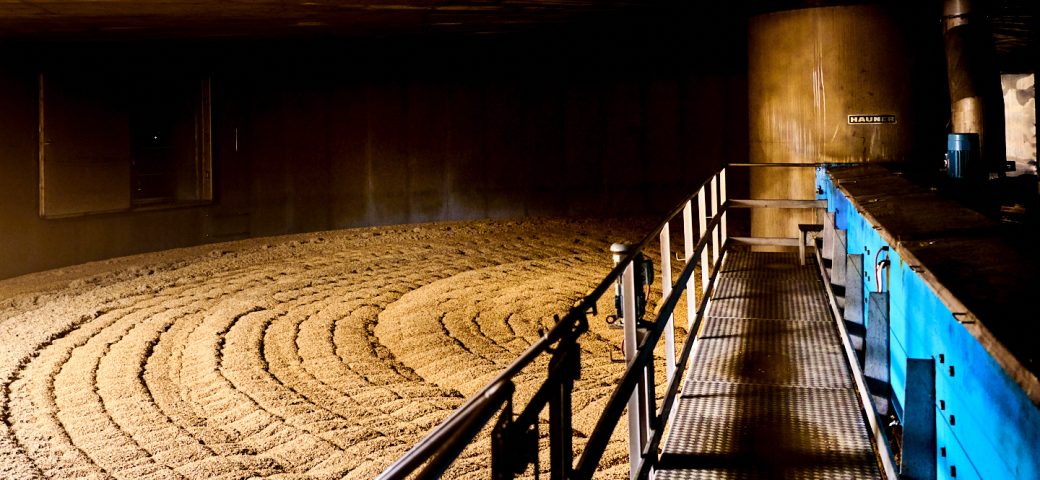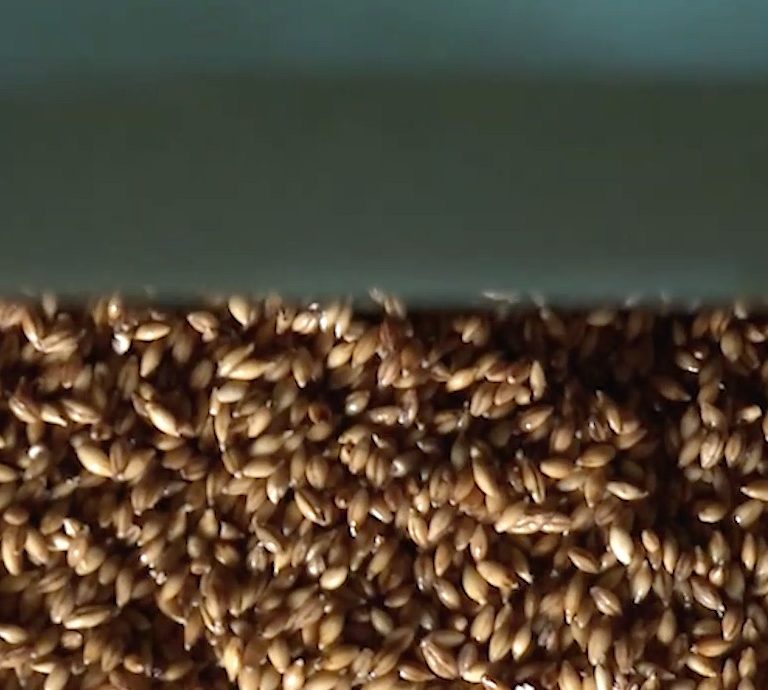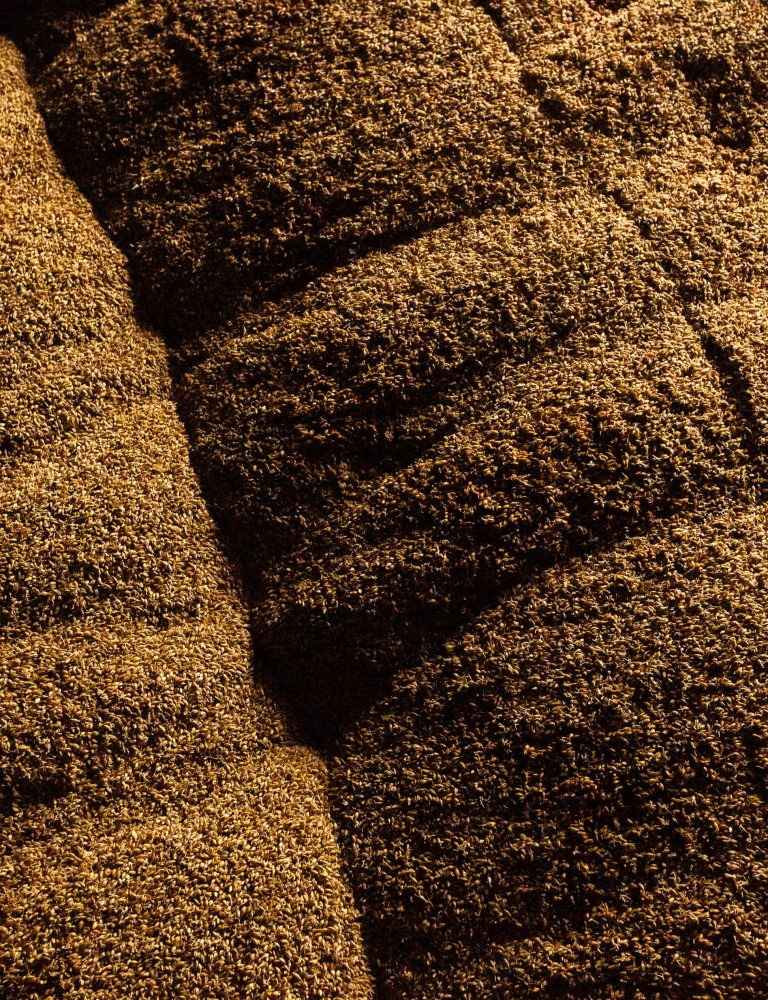
Following the steeping process, the chitting grains of barley are cast into either a germination and kilning vessel (GKV), germination vessel (GV) or germination drum to continue the germination process.
Broadly speaking, the germination drums and germination vessels (GVs) at our Tivetshall St Margaret Maltings are used for barley that will go on to produce crystal malt in our Roast House, while the germination drums at our Tweed Valley Maltings predominantly serve one of our distilling customers and their specifications.
GKVs, meanwhile, are where the vast majority of our base malts, highly kilned malts and distilling malts complete the process of being turned from barley into malt.
We have ten GKVs at our Tweed Valley Maltings, split into two groups of five. In one of the groups, the GKVs have a capacity of 300 tonnes and are 26 metres in diameter while, in the other group, the GKVs have a capacity of 400 tonnes and are 30 metres in diameter.
The five GKVs at our Tivetshall St Margaret Maltings each have a capacity of 120 tonnes. The four germinations drums can hold 35 tonnes each, while the two germination vessels have a capacity of 74 tonnes each.
What happens to the grains during malt germination?
The aim of the germination phase – which lasts for no less than four days – is to modify the endosperm of the grains by breaking down the cell walls, protein matrix and starch granules.
In nature, the modified endosperm feeds the embryo. However, we’re using this step to make the starch granules accessible to the brewer or distiller. When it comes to the mashing process during brewing and distilling, the starch granules will be broken down by enzymes present in the malt to fermentable sugars.

How does germination happen?
The chitting grains are cast into the GKV, GV or a germinating drum. In a GKV and GV, this occurs via the loading chute in the centre of the vessel. Throughout the casting phase, the floor of the GKV or GV moves to ensure there is an even spread of grain throughout the vessel.
Over the next four days, the barley germinates under temperature and humidity-controlled conditions and the maltster’s role is to judge the point where the endosperm is fully modified.
During this growth phase, little rootlets – known in the malting industry as culms – begin to stick out of the grain. This creates a problem as it starts to impact the air flow.
In a GKV and GV, the floor rotates once again and the grains pass a turner unit, where some of the rootlet growth is broken off. Turning the grain like this helps with circulation and air flow as it prevents the grains from becoming matted. It also ensures that an even bed is maintained across the vessel and, importantly, maintains homogeneity, with every grain in the batch malted evenly.
In a germination drum, regular turns take place to help with air circulation inside the drum, while a metal spiral in the centre of the drum assists in trimming the rootlet growth.
By doing all of this, it ensures that the grains are germinated at optimum capacity.

Kilning
When the maltster judges that the germination process is complete, the grains are then dried in the same GKV – known as the kilning process.
Kilning kills the embryo and stabilises the endosperm of the grains, but leaves viable enzymes that are used by brewers and distillers in the mashing process.
For the grains in the GVs or germinating drums, they are then transferred to our Roast House to be made into crystal malt.
In the GKV, the cool, humidifying air from the germination phase is switched over to warm air. This halts the growth of the grains and removes most of the moisture from them – going from around 45% moisture content to 4% or lower in the finished malt.
The duration of the kilning process is anywhere from 20 to 24 hours. The temperature during this time and the duration of it determines, ultimately, what malt product is made, as this gives the variances in both flavour and colour.
To learn more about the production of our crystal and roasted malts, head to our Roasting page. We also produce Peated Malt for some of our distilling customers, with the peating process conducted after the kilning phase.
